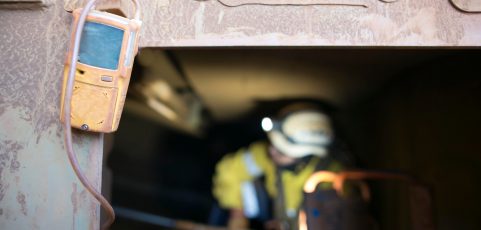Of all industrial operations, mining is arguably the most dangerous. With various drill shafts and underground tunnels extending for miles beneath the Earth’s surface, miners are at risk of quick gas buildups, fires, and explosions. Due to these and many other dangers, mining operations must always have detection systems in place to keep their areas as safe as possible. Since in most cases methane is the primary gas that can lead to catastrophic events in these settings, special mining and industrial detectors are used to monitor for methane leaks. But to know which systems work best in these environments, here are some additional details regarding their features and reliability.
Machine-Mounted Detectors
According to federal regulations, all coal mining operations are required to have mining detector technology in place that monitors for methane and oxygen levels that may be at dangerously low levels. Because of this, detection equipment is placed on all drilling equipment, and is calibrated specifically to detect methane levels that reach a concentration of one percent or higher, which will trigger an alert from the detection equipment. Since it is vital the electronics in these detectors be protected against dust, dirt, and vibrations, they are fitted with special caps that protect them from damage.
Portable Monitoring
Along with meeting federal requirements for machine-mounted detection systems, many mining operations also use portable mining detectors to keep workers safe from dangerous methane leaks. Since these detectors are very small and can be clipped to a miner’s clothing or belt, they allow for hands-free monitoring while working in virtually any area of a mine. Along with this, just as it is with fixed detectors, portable mining and industrial sensors are equipped with wireless technology, enabling them to send real-time data to monitoring stations and mining safety engineers.
Quick Response Times
In many mining operations, methane leaks occur when a shaft first starts to be opened. Thus, once drilling operations stop and equipment is moved to another location, methane can be released through cracks in the ground or through cracks in rock walls, and can lead to dangerous buildups in a matter of minutes. Due to the potential for a fire or explosion in these cases, a quick response time is required once high methane levels are detected. To make this happen, mining sensor technology relies not only on advanced electronics and precise calibrations of sensors, but also detectors equipped with various alarm systems. With most detectors, the alarm systems include sirens, flashing lights, and strobes, all of which can be useful should a shaft need to be evacuated in the event of an emergency.
Due to the many complexities associated with mining operations, it is essential the best possible detection systems be selected and installed in shafts and other areas where methane levels may rise or oxygen levels may drop to dangerous levels. Therefore, it is best to not leave these decisions to chance. Instead, contact an Applications Engineer at GDS to discuss which detection system will best meet your needs.

